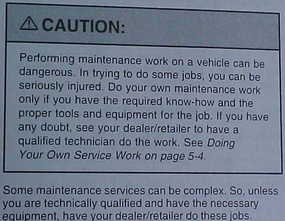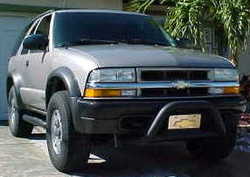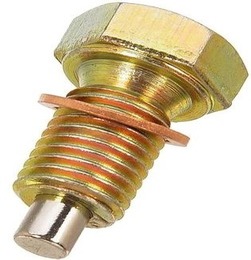
Review these Oil change tips and some unique advice from a mechanic in reference to getting the most out of a DIY maintenance service.
Changing your own engine oil has some advantages over going to a quick lube center, but it is not right for everybody. The lube, oil and filter service is a simple operation on some cars and harder than it should be on others.
Either way it’s very important to a vehicle’s longevity and should be performed as recommended by the manufacturer whether it gets done at an repair shop or in the driveway. The quick lubes are in the business of doing maintenance services extremely fast.
This usually involves the technician rushing to complete it as soon as possible. Often these guys are timed and can be fired if slow. You on the other hand can devote an hour to the service.
This will result in an outcome based on quality not speed. When you’re the boss you can make sure everything is done properly and this can help the engine last longer and provide better trouble-free performance.
Another big advantage of self service is the flexibility to use better quality materials if you choose to. Some lubricants claim and show proof that they can increase fuel economy for the life of the automobile. The following oil change tips are things that I do myself on every service.
First Oil Change Tip

When you are changing the oil you want to make sure the engine is warm. Not hot and not cold.
What I do is, run the engine for about 20 minutes or take a trip to the local convenience store for a Slurpee, then put the car in the work area.
Then I let the automobile set for another 20 minutes with the hood up and allow the engine to cool. This also allows the engine oil and deposits to settle into the bottom of the oil pan.
Letting the engine oil circulate before the service is a good idea because it can remove some last minute dirt. Before I remove the drain plug I will pull the dipstick and carefully feel the temperature to make sure it’s just right.
When the oil is cold it becomes thick and drains slowly. When it’s hot it comes out fast but you run the risk of burning yourself and messing up the driveway with splashes.
Service Tips Number Two
When I’m changing my own engine oil on my Chevy Blazer or even my wife’s Toyota Corolla. I do not lift or raise the vehicle.
The main reason for this is safety concerns and convenience. The most dangerous part of being a do-it-yourself mechanic is lifting a vehicle in the driveway without the proper equipment and safety precautions.
If you can avoid dragging out the floor jack and stands you’re much better off. On the two cars I own, lifting the vehicle is not necessary for changing the oil.
Yes I do have to lay on the ground and reach under the car to access the drain plug and the oil filter, but it can be done. This may not be possible on all vehicles, but you should certainly take a look and see if you can reach the filter and drain plug without raising the vehicle. If you can, this is the best way to go.
Third Oil Changing Tip

My third piece of advice is to have some patience and let the oil fully drain from the pan.
After I remove my drain plug I allow the oil to drain for 20 minutes or sometimes even a half hour.
This is a good time to check and top off your fluid levels and perform a visual inspection of belts and hoses.
The bulk of the oil comes out within a minute or two, but it will continue to drip from the drain plug area. The dripping engine oil may be small in quantity, but has the highest concentration of dirt and debris.
This is because we let the oil settle awhile before we started the maintenance service. This way most of the dirty oil and sediment has reached the very bottom of the pan.
I have even been known to flush out the last of it by adding some fresh oil before installing the plug.
I also use a torque wrench to tighten the plug. The factory knows how tight it should be and going beyond this point can damage the pan and threaded bolt.
Do yourself a favor and look up the torque specification and get a cheap torque wrench. This is one of the main advantages of doing the oil change service yourself at home.
Taking the time and doing the best possible job while at the same time, enjoying some quality time with the beloved automobile. I call my car Christine.
A quicky lube place that works on volume will often just drain the bulk of the oil and then jam the plug back in and refill the fluids.
This method winds up leaving the dirtiest of the oil in the bottom of the pan. The undesirable remnants of the old stuff are then mixed with the fresh oil and reduce the quality of the service.
But since we are do it yourself mechanic’s, we can take the extra time and allow the dirtiest of the engine oil to drain from our oil pan. A bonus tip: Oil drain plugs get worn over time.
This is an inexpensive little bolt that you might want to consider replacing. If it’s to late and damage has occurred to the pan threads I put together an article about stripped drain plugs on my blog.
Give this oil change tips page a bookmark or share with friends.
If you would care to learn more about this site and what gives me the right to dispense auto repair advice then you will find the Start page for Auto-Facts.org helpful.
One of the most often viewed pages on this car website provides tips and advice for do it yourself auto repair. This next link takes you from oil change tips to DIY auto repairs. Search this car repair website and the Internet at the same time.
